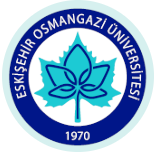Discriminative Convex Models for Set Based Face Recognition : This is a software package the discriminative convex models used for set based face recognition. See our paper Video Based Face Recognition by Using Discriminatively Learned Convex Models by Hakan Cevikalp and Golara Ghoran Dordinejad (submitted to International Journal of Computer Vision). ..click here
Polyhedral Conic classifiers: This is a software package for polyhedral conic classifiers. See our paper Polyhedral Conic Classifiers for Computer Vision Applications and Open Set Recognition by Hakan Cevikalp and Halil Saglamlar (submitted to IEEE Transactions on PAMI). ..click here
Fast and Accurate Face Recognition with Image Sets: This is a software package for large-scale face recognition using image sets. We use polyhedral conic classifiers for set based recognition. See our paper Fast and Accurate Image Sets Recognition Based on Polyhedral Conic Functions by Hakan Cevikalp and Hasan Serhan Yavuz (submitted to the Pattern Recognition). ..click here
LARGE-SCALE SET-BASED FACE RECOGNITION: This is a software package for large-scale face recognition using image sets. We use kernelized convex hulls to approximate image sets and and show that it is sufficient to use only the samples that participate in shaping the image set boundaries in this setting. To find those important samples that form the image set boundaries in the feature space, we employed the kernelized Support Vector Data Description (SVDD) method which finds a compact hypersphere that best fits the image set samples. See our paper Towards Large Scale Set Based Face Recognition By Using Convex Hull Models by Hakan Cevikalp, Hasan Serhan Yavuz and Meltem Yalcin (submitted to the IEEE Transactions on Circuits and Systems for Video Technology). ..click here
LARGE-SCALE IMAGE RETRIEVAL: This is a software package for large-scale image retrieval. The method uses Transductive Support Vector Machines and Binary Hierachical Trees to produce compact Hash codes. In contrast to the existing methods in the literature, the proposed method can use both the labeled and unlabaled data. See our paper Large-Scale Image Retrieval Using Transductive Support Vector Machines by Hakan Cevikalp & Merve Elmas. ..click here
ROBUST TRANSDUCTIVE SUPPORT VECTOR MACHINES: This is a software package for Robust Transductive SVM classifier. We also provide the code for Transductive SVM classifier using Concave-Convex procedure here. See our paper Large-Scale Robust Transductive Support Vector Machines by Hakan Cevikalp & Vojtech Franc (submitted to the Neurocomputing). ..click here
BEST FITTING HYPERPLANES CLASSIFIERS: This is a software package for best fitting hyperplanes classifiers. Here, you can find the codes for our proposed methods "1-Sided Best Fitting Hyperplane" and "2-Sided Best Fitting Hyperplane" classifiers. We also provide the codes for other best fitting classifiers, "Generalized Eigenvalue Proximal Support Vector Machine-GEPSVM" of Mangasarian and Wild, "Twin Support Vector Machine" of Jayadeva et al. So, this is a full package of best fitting hyperplanes classifiers. See our paper Best Fitting Hyperplanes for Classification by Hakan Cevikalp (submitted to the IEEE Transactions on Pattern Analysis and Machine Intelligence). ..click here
LATENT TRAINING OF CASCADE CLASSIFIERS DETECTOR: This is a software package for latent training of the cascade detector of binary and one-class classifiers. By using this package, experimental results on PASCAL VOC 2007 datasets can be reproduced as described in our paper Visual Object Detection Using Cascades of Binary and One-Class Classifiers by Hakan Cevikalp and Bill Triggs (submitted to the IEEE Transactions on Image Processing). ..click here
PEDESTRIAN DETECTOR: This is a person (pedestrian) detector trained by using about 20K positive samples. It uses a cascade of classifiers that include both binary and one-class type classifiers. We trained 4 roots detector in total. There are two roots close to being symmetric for each root detection window. We used latent training strategy as described in our paper Visual Object Detection Using Cascades of Binary and One-Class Classifiers by Hakan Cevikalp and Bill Triggs (submitted to the IEEE Transactions on Image Processing). ..click here
SEMI-SUPERVISED DISCRIMINATIVE COMMON VECTOR METHOD: This is a distance metric learning algorithm which uses pair-wise equivalence (similarity and dissimilarity) constraints to improve the original distance metric in high-dimensional input spaces. It uses a method based on discriminative common vector methodology using constraints instead of explicit class labels. We also provided Matlab codes (written by us) of other tested methods such as Relevant Component Analysis (RCA), Kernel RCA, Discriminative Component Analysis and its kernel version. Please see the paper titled Semi-Supervised Discriminative Cmmon Vector Method for Computer Vision Applications (Neurocomputing, vol. 129, pp. 289-297, 2014) by Cevikalp...click here
RIGID OBJECT DETECTION USING CASCADES OF CONVEX CLASS MODEL CLASSIFIERS: It includes face and people detectors that use cascades of nearest convex model classifiers and linear SVM. In the first stage of the cascade we use a linear SVM. The rest of the cascade includes a combination of efficient "one-class" nearest convex model classifiers including a linear hyperplane classifier, a linear hypersphere classifier, and a nonlinear hypersphere classifier. Please see the paper titled Efficient Object Detection using Cascades of Nearest Convex Model classifiers (CVPR 2012) by Cevikalp and Triggs for more information...click here
LARGE MARGIN CLASSIFIER BASED ON HYPERDISKS: These are essentially binary large margin classifiers, but we use hyperdisks to approximate classes rather than convex hulls or affine hulls. We can use kernel trick as well. For multi-class problems one-against-rest and one-against-one procedures are used. Please see the paper titled Large margin classifier based on hyperdisks, Pattern Recognition, by Cevikalp and Triggs for more information...click here
SVM BASED HIEARARCHICAL DECISION TREES: It includes two new clustering algorithms for partition of data samples for the support vector machine based hierarchical classification. A divisive (top-down) approach is considered in which a set of classes is automatically separated into two smaller groups at each node of the hierarchy. Please see the paper titled New clustering algorithms for the support vector machine based hierarchical classification (Pattern Recognition Letters, 2010) by Hakan Cevikalp for more information.... click here
LARGE MARGIN CLASSIFIERS BASED ON AFFINE HULLS: These are essentially binary large margin classifiers, but we use affine hulls to approximate classes rather than convex hulls. They are especially good for high-dimensional problems and we can use kernel trick as well. For multi-class problems one-against-rest and one-against-one procedures are used. Please see the paper titled Large margin classifiers based on affine hulls (Neurocomputing, 2010) by Cevikalp et al. for more information...click here
FACE RECOGNITION BASED ON IMAGE SETS: A novel method for face recognition from image sets. We represent images as points in a linear or affine feature space and characterize each image set by a convex geometric region (the affine or convex hull) spanned by its feature points. Set dissimilarity is measured by geometric distances between convex models. See the paper titled Face recognition based on image sets (CVPR 2010) by Hakan Cevikalp and Bill Triggs for more information... click here
DISTANCE METRIC LEARNING BY QUADRATIC PROGRAMMING BASED ON EQUIVALENCE CONSTRAINTS: This is a new distance metric learning algorithm which uses pair-wise equivalence (similarity and dissimilarity) constraints to improve the original distance metric in lower-dimensional input spaces. Learning a pseudo distance metric from equivalence constraints is formulated as a quadratic optimization problem, and we also integrate the large margin concept into the formulation. Please see the paper titled Distance Metric Learning by Quadratic Programming Based on Equivalence Constraints (International Journal of Innovative Computing, Information and Control, 2012) by Cevikalp for more information...click here

